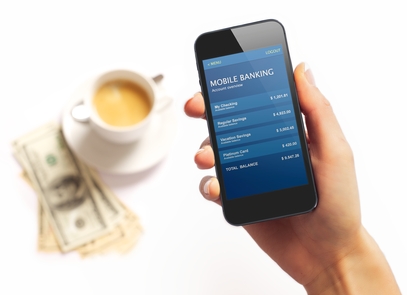
The U.S. Federal Reserve published a report regarding the state of mobile banking and mobile payments this week, and the news is good. In 2011, the Federal Reserve Board began tracking consumer use of mobile financial services, and they have kept tabs on it ever since. The results from previous years have been compared to their current findings, and the information discovered was presented in their “Consumers and Mobile Financial Services 2015” report.
In 2014, the Fed surveyed a sample of 2900 people. The key points are as follows:
1) “Mobile phones are in widespread use.”
Approximately 87% of adults in the United States have mobile phones, and 71% of those mobile users have internet-enabled smartphones. This reflects a 61% increase in the number of data-enabled smartphones since 2013. We are ever more likely to see more use of mobile phones in the coming years, akin to how computers became much more common in the household in the 1990’s.2) “The ubiquity of mobile phones is changing the way consumers access financial services.”
Up from 33% in 2013, 39% of consumers are now banking from their mobile phones. 11% of non-users claim that they will consider using mobile banking within the next year (which is nearly the same as the previous year). It is most common for users of mobile banking to check their balances, but 61% of mobile banking users have transferred money to and from accounts. 57% of users have received alerts from their bank, as well. Finally, 51% of mobile banking users have utilized remote deposit capture to deposit a check using their smartphones.3) “Mobile phones are also changing the way consumers make payments.”
In 2013, about 17% of mobile phone owners made payments through their mobile phones, but that number was up 5% in 2014. Also, many mobile phone users made point-of-sale purchases from their phones – about 39% (2013 had the same result). In addition, residents of more rural areas tended to have a lower incidence of mobile payment use than more urban areas. Mobile payments are quick and convenient, and users are gradually turning to their phones for the simplest payment solutions.4) “A preference for other methods of banking and making payments, as well as concerns about security, continue to be the main impediments to the adoption of mobile financial services cited by some consumers.”
There are still many who prefer not to use mobile payments or banking. 86% claimed that their needs could not be met by mobile banking platforms; 75% of non-users stated that cash or credit card payments were still easier than mobile payments. Roughly 60% of all the people surveyed that did not use mobile banking or payments claimed that they felt the security of the technology – or lack thereof – was of great concern to them. While security concerns are an issue with mobile apps, many believe that future generations will be more apt to accept mobile banking as a way of life.5) “Smartphones are changing the way people shop and make financial decisions.”
People are using their smartphones to comparison shop while in a store (about 47% of mobile phone users). 69% of those comparison shoppers have changed where they purchased a product as a result of what they learned. Furthermore, 42% of smartphone users browse product reviews while shopping at a brick-and-mortar location, and 79% of these reviews have compelled shoppers to alter their purchases. Lastly, mobile banking users tend to check their account balances before making large purchases (roughly 63%). About half of these users decided not to make a purchase after checking their accounts. With the commonness of mobile apps for banking and payments, shoppers are getting smarter about finding the best deal for the highest quality.6) “Mobile phones are prevalent among unbanked and underbanked consumers.”
Oddly enough, 67% of unbanked persons have access to a mobile phone, and 90% of underbanked people have mobile phones. Also, 48% of underbanked consumers had used mobile banking in 2014. This information could mean that there will be an upsurge in the number of people considering using apps for mobile payments and banking in years to come.
Mobile phones (and smartphones) will continue to become more common than computers in the next few years. As the potential security risks are minimized, consumers will come to rely upon their mobiles for many daily activities, particularly for mobile payments and banking. The services currently provided for consumers via mobile show that smartphone users want to have more access to helpful apps (in light of the prevalence of mobile coupons, discounts, promotions and loyalty programs). Mobile banking, therefore, is all the more likely to increase in prevalence in the coming years, as well.